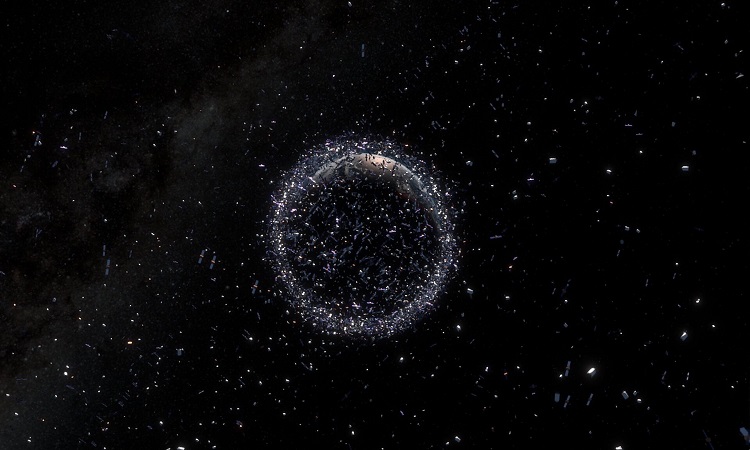Thousands of space debris are present in low orbit. On the ground, scientists calculate their trajectory to avoid possible collisions. While these calculations are usually only possible for a few hours at night, researchers have developed a technique to observe the debris during the day and without a time limit.
A revolution in observation?
Since the 1960s, the space surrounding our planet has contained a great deal of debris: rocket stages, boosters, or even inactive satellites. Today these tons of debris pose a threat taken very seriously to the International Space Station (ISS) and other active satellites. However, some debris carries reflectors and is easily spotted. However, the majority do not.
From Earth, astronomers scan this debris with lasers to predict its path and avoid possible collisions. However, the current technique allows this for a few hours only, and at night. A study published in the journal Nature Communications on August 4, 2020, suggests a new approach. This research led by Tim Flohrer, head of the Space Debris Office at the European Space Agency (ESA) could revolutionize the observation of space debris.
Motivated by this research, ESA is already planning to build a new laser station in the Canaries (Spain). The latter will be located near the current OGS telescope of the Teide Observatory on the island of Tenerife. The visual below relates to the future space debris surveillance network.
Telemetry all-day
At the Austrian Space Research Institute, researchers succeeded in increasing the contrast of space debris. Thus, these become visible in broad daylight! This new technique uses a combination of telescopes, filters, and other detectors. In a statement, the scientists explain that now it is possible to observe previously invisible objects in the blue sky. In other words, they are now capable of laser ranging all day long to better help avoid possible collisions between debris and orbiting satellites.
“Ultimately, this means we will get to know the debris population better, which will allow us to better protect Europe’s space infrastructure,” said Tim Flohrer.
While the study leaders were able to spot around 40 different pieces of debris, their observations go further. Indeed, they observed stars whose luminosity is ten times lower than that of stars visible to the naked eye!




